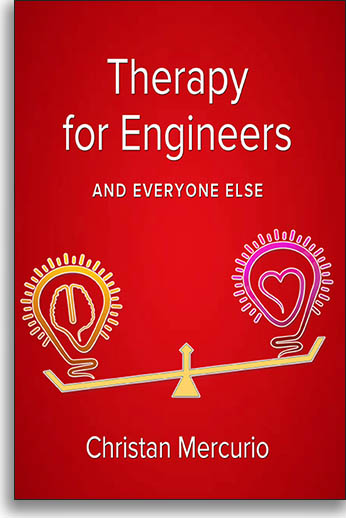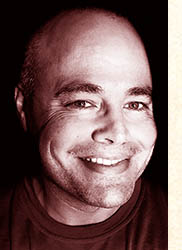NEW FROM FEARLESS ASSISTED PUBLISHING:
 From Inertia to Insight
From Inertia to Insight
and Transformation
This unusual book blends personal storytelling with the essential truths of transformative therapies to show how anyone can overcome the inertia of unproductive habits and attitudes.
More than just an explanation of therapeutic principles, this book immerses readers in compelling stories that showcase the practical applications and life-changing impacts of therapies like Accelerated Experiential Dynamic Psychotherapy (AEDP); Emotionally Focused Therapy (EFT); Eye Movement Desensitization and Reprocessing (EMDR); Internal Family Systems (IFS); Neurosequential Model of Therapy (NMT), and more.
These models go beyond academic theory, offering real tools that dismantle deep-seated psychological inertia. This no-nonsense guide to emotional regulation and personal evolution makes the complex interplay of brain and behavior accessible to everyone, particularly professionals accustomed to logic but unfamiliar with the depths of therapy. THERAPY FOR ENGINEERS transforms psychological insights into practical tools for everyday resilience and continuing growth.
__________________________________________________________

Christan Mercurio is an MFT Trainee at both Process
Therapy Institute and Peace-it-Together, and a Master’s candidate
in Counseling Psychology at Santa Clara University. With over two decades of experience in the tech industry, he brings a unique perspective to his practice, understanding well the challenges faced by professionals in high-stress environments. Having been in 12-Step recovery for over 19 years, he integrates personal insights from his recovery into a holistic therapeutic approach that addresses the interconnectedness of experience, emotion, and biological processes.
______________________________________________________________
I N T R O D U C T I O N
“911, what’s your emergency?” the operator asked as I stood there in stunned silence.
What was my emergency?
I hung up.
I was six years old when I found out my mother was a lesbian. On a warm Saturday morning in the summer of 1984, I woke up in my bed room in my mother’s apartment. I went into the bathroom, peed haphazardly into the toilet, remembering to lift the lid but not the seat. Bleary-eyed, I made my way into the kitchen, placed both hands on the corner of the laminate countertop, and pushed my scrawny body and feet onto the surface so that I could reach the cereal, bowls, and glasses. Sugary cereal with milk, a glass of Coke with OJ and ice, and of course, Saturday morning cartoons.
On this particular morning, even though the 13-inch TV itself was a gorgeous avocado that luckily faded from housewares with the rest of the ‘70s, the picture was decidedly black and white. I don’t know what precipitated the following events, but I walked down the hall and opened the door to my mom’ s room. I didn’t knock. I simply opened the door to find my mother in bed with her friend Steph, and was greeted by an embarrassed swirl of sheets. I didn’t say anything. I closed the door abruptly, ran down the hall to the kitchen, pulled the phone receiver off the wall, and dialed 9-1-1.
After I hung up the phone, they called back. My mom picked up the phone in her room and immediately learned why I had run down the hall. What was the emergency? My life, which had imploded with the swirl of sheets. My parents were not getting back together. Ever.
Born in San Jose, California, I’ve lived in the area my entire life. From an early age I was enveloped in an atmosphere filled with domestic violence. My parents worked all the time, and I rarely saw them. When my parents separated and divorced, it marked the beginning of a series of significant personal and familial challenges. My mother’s brave decision to come out as a lesbian added layers of complexity to our family dynamics, particularly given the social stigmas of the 1980s. Her struggles with her identity and emerging alcoholism taught me about the courage needed to face one’s truth amidst adversity.
Living with my father and stepmother brought its own set of challenges, including feelings of anger, displacement and neglect. They were verbally, physically, and emotionally abusive. I saw very little of my mom and her partner, who were battling their own issues with work and personal struggles. At nine, I saw a therapist for the first time. These early interactions, initially confusing and unwelcome, gained a profound significance shortly afterward with my aunt’s suicide, an event that deeply affected me and underscored the importance of psychological support. That side of the family still has not healed from the aftermath.
It wasn’t until my mid-twenties, during a particularly tumultuous phase dealing with my addictions, that therapy became transformative. A therapist’s recommendation to join Alcoholics Anonymous provided a cornerstone of my recovery that continues today.
At twelve, I was kicked out of my father’s house. I moved in with my mom and her partner who worked all the time, leaving me in an environment of neglect. I started working at a flower shop and later at a comic-bookstore, where I encountered abuse of a different kind, deepening my understanding of complex human behaviors and the masks people wear.
Despite these challenges, I navigated my way through education and early employment. I worked multiple jobs to pay for college, starting in consumer electronics and moving into software development. Meeting the woman who would become my wife was a turning point. She encouraged me to follow my passion for music, leading me to transfer to San Jose State University and change my major to Music Education.
Life continued to throw challenges my way — including getting sober, marrying, buying a house, having a child, and facing the immense pressure of balancing work and personal life. My wife stopped working in 2010 due to mental health issues, and we eventually lost our house. I was laid off, survived a heart attack at age 37, and experienced the pain of separation and divorce at 40. Six months later, my daughter stopped talking to me. This has been the unkindest cut, and the most difficult to deal with.
Through all these experiences, therapy has been a lifeline. Therapists provided crucial support during my darkest times, helping me understand the mechanisms of personal change and growth. In graduate school, I connected the concept of the inertial frame from physics to the process of therapy, conceptualizing therapy as a means to disrupt our internal inertial frames that make us resistant to change.
I wrote this book because I know what it’s like to face seemingly insurmountable challenges. I also know that it’s possible to come out the other side stronger and more self-aware. Through sharing my journey and the insights I’ve gained along the way, I hope to offer a beacon of hope for those who find themselves lost in similar struggles. This book is more than a collection of theories and case studies. It is a practical guide grounded in hard science, particularly appealing to engineers and those with an analytical mindset. As I finish a Master’s degree in Counseling Psychology, I’ve drawn on both rigorous academic frameworks and real-world applications for this text, emphasizing empirical evidence supporting therapeutic models like AEDP, EMDR, EFT, IFS, and NMT. Each model is backed by robust research, often linked to neurobiological mechanisms, and illustrated through case studies demonstrating their effectiveness.
You can read this book from cover to cover for a comprehensive understanding, or dip into specific sections as needed. Each chapter provides stand-alone insights while contributing to a holistic view of psychological inertia and therapeutic strategies. This modular design reflects the hard science approach, appealing to those who prefer logical structure and analysis.
By simplifying complex case studies and pairing them with scientific explanations, this book aims to demystify the therapy process and highlight its practicality and effectiveness. The evidence-based practices ensure the methods are dependable and measurable, resonating with a scientific outlook. Whether you’re facing personal or professional challenges, this guide is a transformative tool, offering paths to growth and change. I hope my experiences and the lessons I’ve learned will inspire you to seek help, embrace change, and believe in the possibility of a brighter future.
This is a different kind of book. Nothing like it exists. I checked.
C L I C K T O :
ASSISTED PUBLISHING




